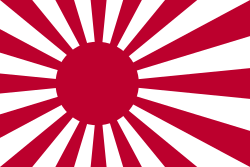| Japan Maritime Self-Defense Force 日本国 海上自衛隊 (Kaijō Jieitai) |
|---|
 |
| Components |
| History |
| Ships |
Etajima base (JMSDF Etajima Naval Base) in Etajima city, Hiroshima prefecture is in the Etajima-cho government building and is the base of the Japan Maritime Self-Defense Force. Beside housing the 1st Technical School and the Officer Candidates School, it is home to the local Kure Naval District, LCAC training facilities, and Self-Defense Force oil storage. In addition, the Special Forces of the Maritime Self Defense Force are based here.

